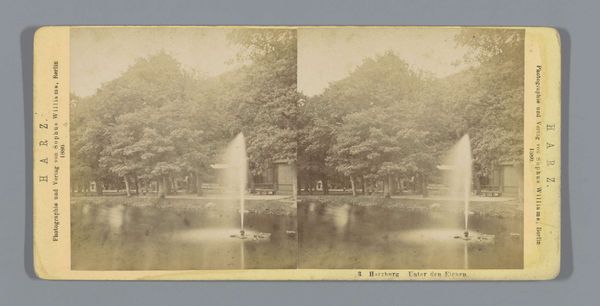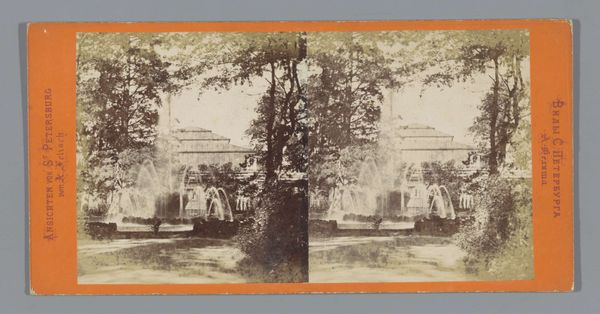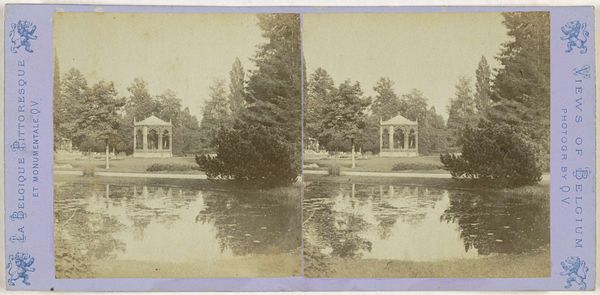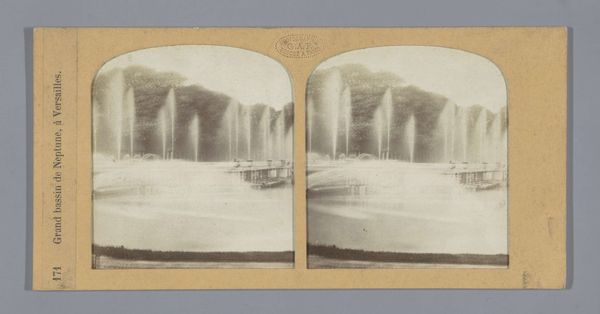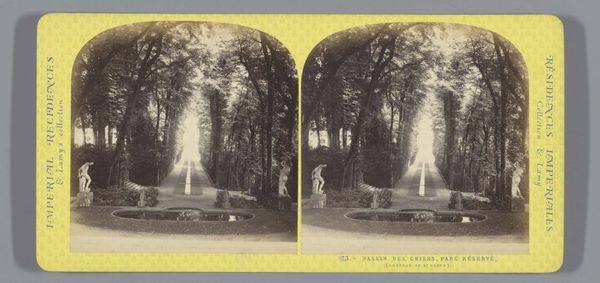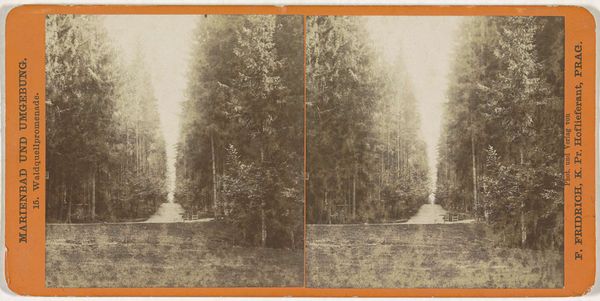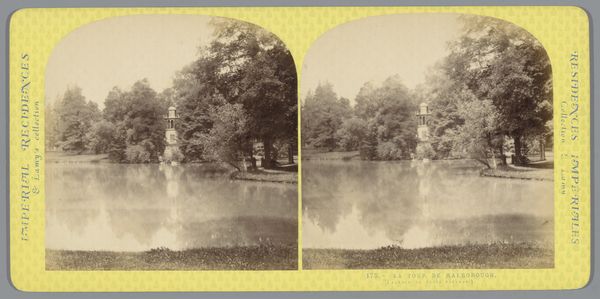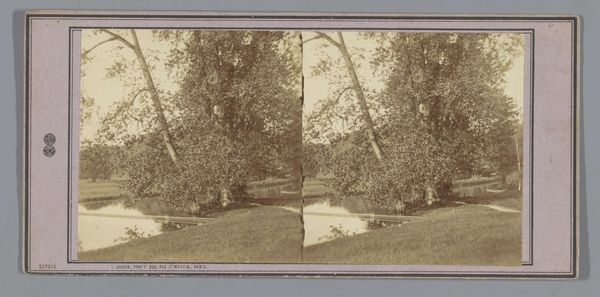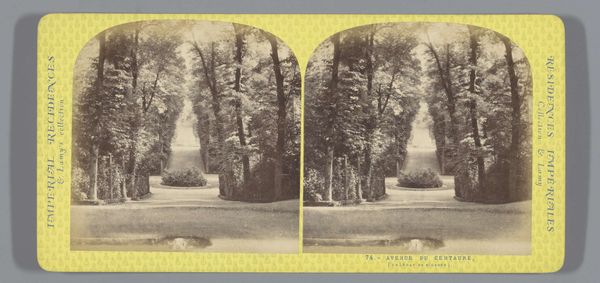
print, photography
#
neoclacissism
# print
#
landscape
#
photography
#
park
Dimensions: height 83 mm, width 169 mm
Copyright: Rijks Museum: Open Domain
Curator: Ah, this old photograph! It's titled "Fontein in de tuinen van Versailles," or "Fountain in the Gardens of Versailles," and dates back to 1858. The photographer is Florent Grau, and the piece is an albumen print. It's really something, isn't it? Editor: It evokes a certain... ghostly tranquility. The hazy focus, the symmetry of the fountain and the avenue of trees... It feels more like a memory than a real place. Almost like a theater set in the forest. Curator: You've hit upon something interesting there. Early photography like this was so often staged, wasn’t it? Think about the relationship to power. Versailles, even then, was this potent symbol of absolute monarchy, meticulously designed to overwhelm and impress. Do you think this photograph perpetuates that? Editor: Absolutely. Look at the way the fountain is centered, dwarfing the figures on the bench in the background. It speaks volumes about the social hierarchy ingrained within that space. Curator: There's this weird kind of magic, though. This blend of artifice and fleeting moment, it really captivates me. Do you think someone visiting Versailles, or even looking at pictures of it now, understands its symbolic function or do they get too lost in the sheer beauty? Editor: Beauty is a distraction, sometimes. Consider who benefits from the upkeep of places like Versailles. These manicured landscapes hide centuries of exploitation of laborers and resources. It is vital we remember such inequities when viewing art like this. Curator: That’s true. You can get easily swept up. Yet, this piece, for me, is a quiet testament to fleeting moments and how the world is continually shifting and rearranging itself even amid absolute control. Editor: Perhaps we can reconcile these feelings. I see this piece, despite its undeniable beauty, as a reminder that even grand spectacles can perpetuate narratives of power that we must critically examine. Curator: A haunting photograph. Yes, haunting, perhaps not just visually, but conceptually too. A beautiful, yet troubling slice of the past. Editor: Yes, that resonates. It serves as a reminder that art—even seemingly serene landscapes—is always enmeshed in complex socio-political currents, inviting ongoing reflection.
Comments
No comments
Be the first to comment and join the conversation on the ultimate creative platform.

